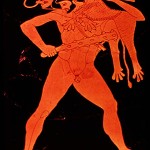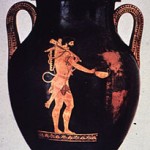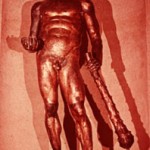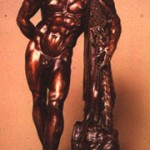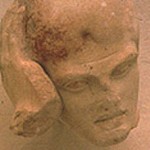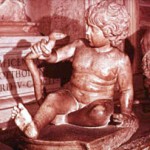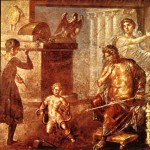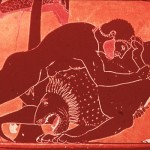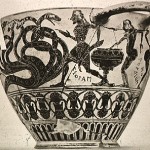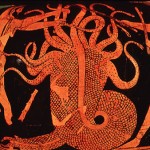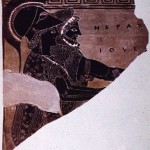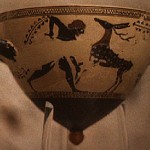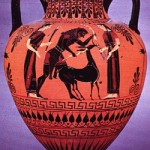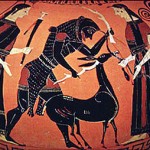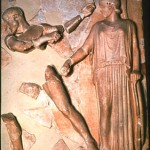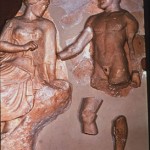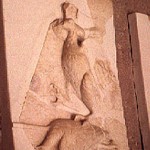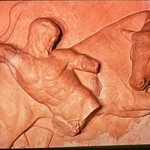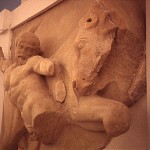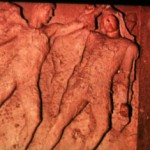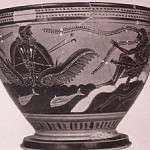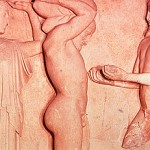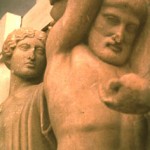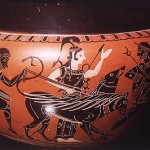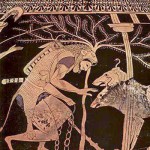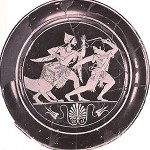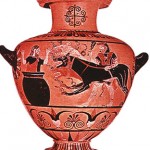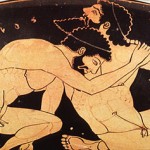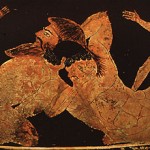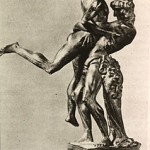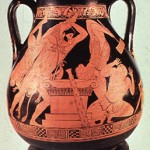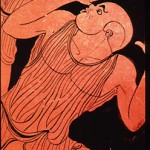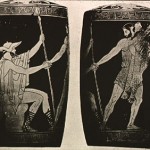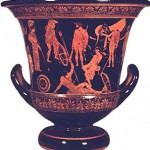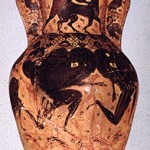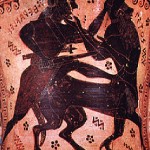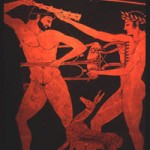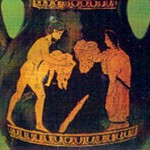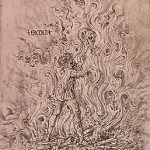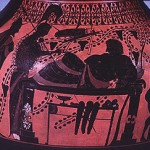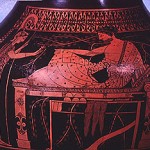Mythology
Herakles
The following links are provided for UNCG student and faculty use only.
Herakles:
Herakles Young and Old – a comparison of two Olympian metopes
Both these images of Herakles come from the series of metopes on the temple of Zeus at Olympia, built c. 470-456 B.C. Notice how the sculptors have aged Herakles from his first labor against the Nemean Lion, where he appears very young and tired, to one of his last, the Apples of the Hesperides. Notice too the traces of red paint on Herakles’ forehead in the first image.Herakles Young and Old – a comparison of two Olympian metopes
Herakles as an infant:
Herakles’ Labors:
Olympian Metopes – drawing with all 12 labors
The drawings below show the series of metopes which once adorned the Temple of Zeus at Olympia, built around 470-456 B.C. Pausanias (5.10.9) describes these metopes, six of which were placed over the east porch and six over the west porch, wrapped around the inside of the building.
The drawing above shows the six metopes at the east end of the building (in order from left to right): the Erymanthian Boar, the Mares of Diomedes, Geryon, Atlas with the Apples of the Hesperides, Cerberus (omitted, for some reason, in Pausanias’ account), and the Augean Stables. It has been suggested that the placement of the Augean Stables at the end of the normal order of labors may have been due to its local importance, since the stables were in Elis, where Olympia is also located.
This drawing shows the metopes at the west end of the building (in order from right to left): the Amazon, the Cerynaean Stag, the Cretan Bull, the Stymphalian Birds, the Lernaean Hydra, and the Nemean Lion.
Lernaean Hydra
Cerynaean Stag
Erymanthian Boar
Mares of Diomedes
Belt of Hippolyta
Cattle of Geryon
Cerberus
Herakles’ Other Adventures:
Herakles and Other Heroes
On this red figure calyx krater by the Niobid Painter (c. 460 B.C.) Herakles is shown talking with Jason as the Argonauts are about to embark on their journey for the Golden Fleece. As usual, Herakles is pictured naked except for his lion skin, holding a club in his right hand and his famous bow in his left hand. Athena, wearing her helmet and aegis and holding a spear, stands just behind Jason.
Herakles did not play a big role in this adventure. He was left by the other argonauts at Cios (in Mysia, Asia Minor) while he searched for his companion, a youth named Hylas. Hylas had been pulled into a local spring by the water nymphs who admired his beauty and drowned. Herakles later set up a cult to the young man.
Herakles’ Death:
On this red figure pelike from Athens (ca. 440-430 B.C.) Deianeira gives Herakles a cloak treated with what she believes is a love potion. The treatment, made from the centaur Nessos’ blood (and poisoned by Herakles’ arrow dipped in the blood of the Lernaean Hydra), instead bursts into flames and kills Herakles.
This bronze statue by Pierre Puget (ca. 1680 A.D.) shows Heracles struggling in vain to remove the burning cloak which clings to his skin and kills him.
